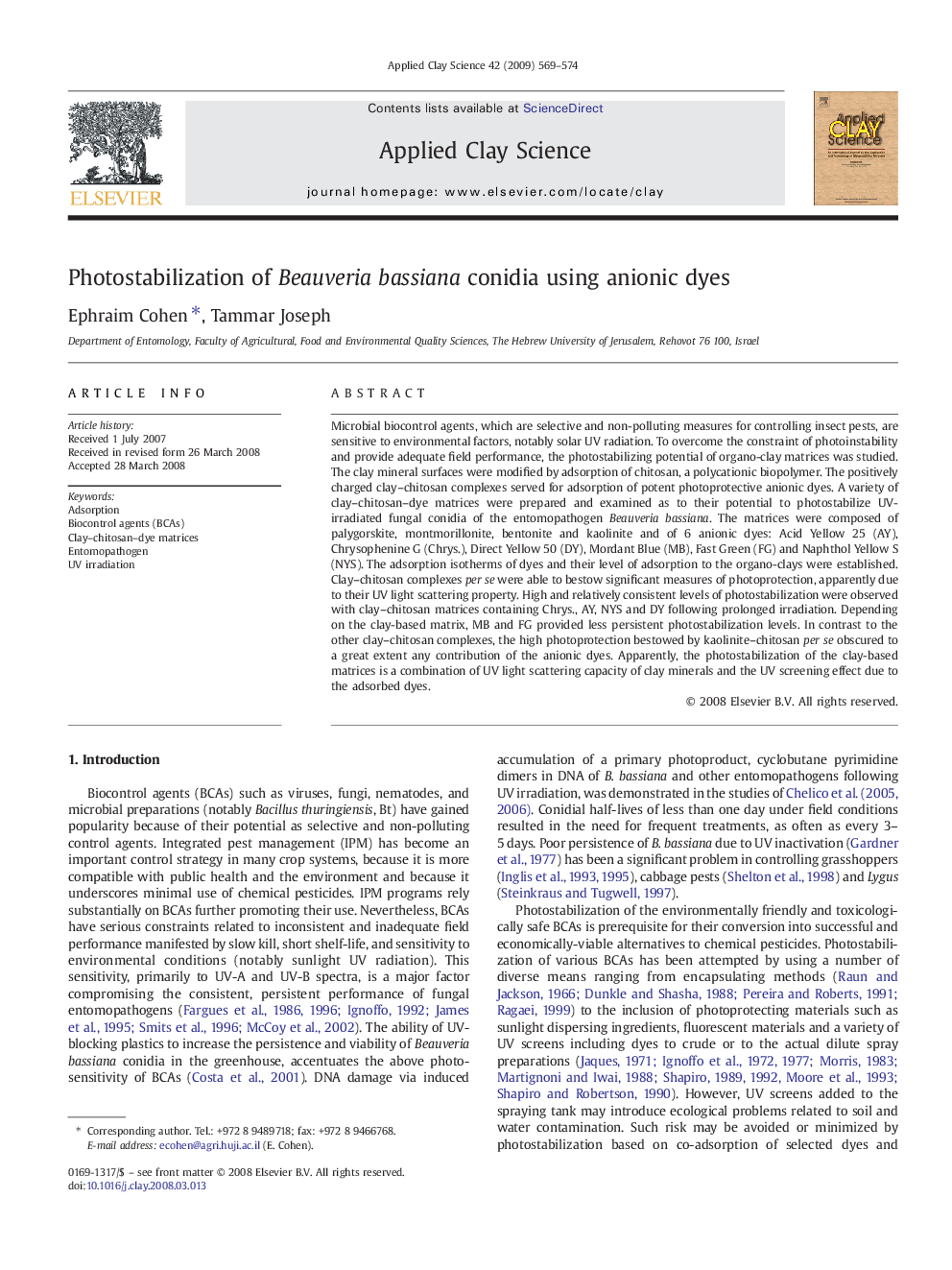| کد مقاله | کد نشریه | سال انتشار | مقاله انگلیسی | نسخه تمام متن |
|---|---|---|---|---|
| 1696420 | 1519124 | 2009 | 6 صفحه PDF | دانلود رایگان |

Microbial biocontrol agents, which are selective and non-polluting measures for controlling insect pests, are sensitive to environmental factors, notably solar UV radiation. To overcome the constraint of photoinstability and provide adequate field performance, the photostabilizing potential of organo-clay matrices was studied. The clay mineral surfaces were modified by adsorption of chitosan, a polycationic biopolymer. The positively charged clay–chitosan complexes served for adsorption of potent photoprotective anionic dyes. A variety of clay–chitosan–dye matrices were prepared and examined as to their potential to photostabilize UV-irradiated fungal conidia of the entomopathogen Beauveria bassiana. The matrices were composed of palygorskite, montmorillonite, bentonite and kaolinite and of 6 anionic dyes: Acid Yellow 25 (AY), Chrysophenine G (Chrys.), Direct Yellow 50 (DY), Mordant Blue (MB), Fast Green (FG) and Naphthol Yellow S (NYS). The adsorption isotherms of dyes and their level of adsorption to the organo-clays were established. Clay–chitosan complexes per se were able to bestow significant measures of photoprotection, apparently due to their UV light scattering property. High and relatively consistent levels of photostabilization were observed with clay–chitosan matrices containing Chrys., AY, NYS and DY following prolonged irradiation. Depending on the clay-based matrix, MB and FG provided less persistent photostabilization levels. In contrast to the other clay–chitosan complexes, the high photoprotection bestowed by kaolinite–chitosan per se obscured to a great extent any contribution of the anionic dyes. Apparently, the photostabilization of the clay-based matrices is a combination of UV light scattering capacity of clay minerals and the UV screening effect due to the adsorbed dyes.
Journal: Applied Clay Science - Volume 42, Issues 3–4, January 2009, Pages 569–574